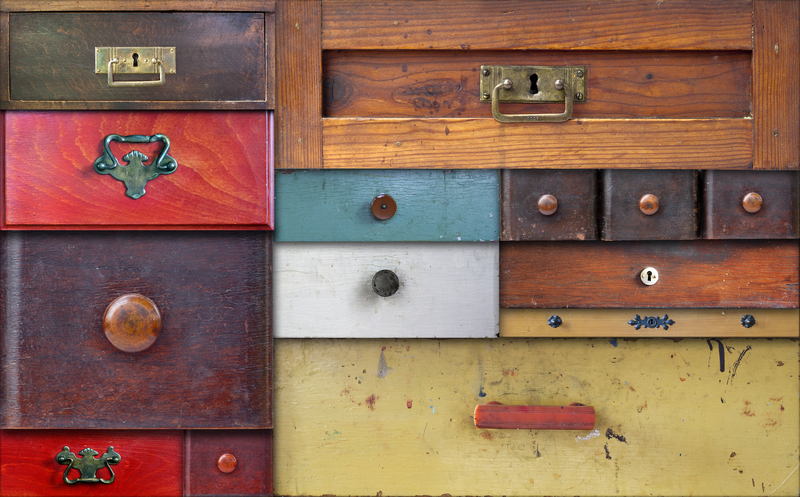Ways to Reduce Your Expenses on Bulky Waste Items
Bulky waste items, such as old furniture, appliances, mattresses, and garden waste, can create significant challenges for households and businesses alike. Not only do they take up precious space, but their disposal often carries hefty costs. If you find yourself regularly dealing with large, unwanted items, finding ways to save money on bulky waste removal becomes essential. This comprehensive guide explores practical and effective strategies to help you reduce your expenses on bulky waste items, keep your home clutter-free, and make more economical and sustainable choices.
Understanding Bulky Waste and Common Disposal Challenges
Bulky waste refers to large household items that are too big to fit in regular waste collection bins. Common examples include:
- Old sofas, armchairs, and beds
- Large appliances like refrigerators, washing machines, or ovens
- Mattresses and box springs
- Large wooden items, such as wardrobes and cabinets
- Carpets and rugs
- Garden waste: branches, tree trunks, and garden furniture
For many, the first instinct is to call the local waste management service or hire a junk removal company. However, these solutions can quickly become expensive. The good news is, smarter alternatives exist. If you are searching for affordable bulky waste disposal, read on to discover creative, cost-effective ways to manage unwanted large items.

The True Cost of Disposing of Bulk Waste
To appreciate how you can save, it's important to understand where the disposal costs come from:
- Local Authority Collection Fees: Many councils charge a fee to collect bulky items. Prices can range from a few dollars to over $100 per item.
- Private Junk Removal Companies: Prices depend on weight, volume, and location, often starting at $80 and going up for each additional item.
- Landfill Fees: Dumping large items yourself usually incurs tipping fees, plus the cost and effort of transport.
- Environmental Impact: Improperly disposed bulky items can harm the environment and lead to fines if dumped illegally.
By understanding these cost factors, you can seek smarter ways to minimize your bulky item removal costs.
Top Strategies to Reduce Bulky Waste Removal Expenses
1. Reuse or Repurpose Wherever Possible
Before sending items to landfill, consider whether you (or someone you know) can give them a second life. Reusing or repurposing bulky items not only reduces waste, but also eliminates disposal costs. Here are some ideas:
- Turn old doors and windows into garden tables or decor pieces.
- Repurpose a mattress as a guest bed for pets or convert the frame into a daybed.
- Use kitchen appliances as planters or storage containers in your backyard.
*Repurposing is not only creative; it's a truly cost-effective way to handle bulky waste.*
2. Sell or Give Away Items in Good Condition
Many bulky items, from couches to fridges, still have life left in them. Selling or donating them can be a smart way to cut bulky waste disposal costs:
- List items for free or for sale on online marketplaces (e.g., Craigslist, Facebook Marketplace, Gumtree).
- Donate to local charities, shelters, or organizations that accept furniture and household goods.
- Organize a garage sale for multiple items at once.
- Join local social media "Buy Nothing" groups where you can give away items for free.
Tip: Offering items for free with the condition that the new owner collects them saves money by eliminating transport or removal fees.
3. Utilize Council or Community Collection Services Smartly
Municipalities often provide affordable bulky item collection services. Here's how to get the best value:
- Check if your area offers scheduled free bulky waste collection days each year, and plan your disposals accordingly.
- Pool together unwanted items with neighbors to split costs on council pick-ups or skip hire.
- Follow guidelines to avoid extra fees, such as placing items out only when scheduled and keeping hazardous materials separate.
Carefully utilizing these programs can result in lower bulky waste item disposal costs.
4. Leverage Appliance Retailer Take-Back Schemes
When purchasing new appliances or furniture, retailers often offer free or discounted removal for your old items. To take advantage:
- Ask about take-back programs when buying large items in-store or online.
- Bundle multiple items for removal during delivery of your new purchases.
- Ensure items meet the condition requirements for take-back schemes (e.g., empty, disconnected, not hazardous).
This approach can save money and effort compared to arranging independent junk removal.
5. Dismantle Items Yourself to Reduce Volume
Most bulky waste disposal costs are calculated by weight or volume. By breaking down furniture or appliances into smaller pieces, you might fit them in your regular collection bin or reduce removal fees.
- Use simple hand tools like hammers, screwdrivers, or saws to dismantle items.
- Sort recyclable components (metal, wood, plastic) and separate them to take directly to recycling facilities.
- Check local regulations to ensure safe and allowable breakdown and disposal.
Reducing the size of each item can help you avoid extra charges for over-sized or heavy loads.
6. Rent or Share a Skip Bin
If you have a significant number of bulky items, hiring a skip (dumpster) may be cost-effective, especially if costs are shared with others. Here's how to maximize savings:
- Coordinate with neighbors or friends to pool waste volumes and split the skip hire cost.
- Book during off-peak periods when rates may be lower.
- Ensure only allowable materials are disposed to avoid surcharges or fines.
*Shared skip hire can substantially minimize bulky waste removal expenses if managed wisely.*
7. Take Advantage of Recycling Centers
Many communities operate household waste recycling centers that accept bulky items free of charge or for a modest fee.
- Research your nearest drop-off sites and understand accepted materials.
- Plan trips to dispose of multiple items at once to save time and transport costs.
- Look for special recycling programs for electronics, mattresses, or white goods.
By dropping off at these facilities, you may avoid the high costs associated with landfill dumping or private junk companies.
Going Green: Sustainable Bulky Waste Solutions
Finding budget-friendly ways to manage bulky waste also contributes to environmental sustainability. Here are some eco-friendly actions to further reduce both your costs and carbon footprint:
- Recycling: Always separate and recycle metals, woods, and plastics whenever possible. Check for specialist recycling programs in your area.
- Community Giveaways: Arrange neighborhood swap events so items can find new homes instead of filling landfill space.
- Upcycling Workshops: Many charities and creative groups offer classes on turning waste into new furniture, art, or useful items.
- Composting: For large garden waste, consider setting up a communal composting bin.
Sustainable disposal ensures the long-term savings reach beyond your wallet--benefiting the community and environment.
Frequently Asked Questions
Are there free alternatives for getting rid of bulky waste?
Yes! Many areas provide free landfill days, community collection events, or recycling drop-offs for residents. Check your local council's website or social media for announcements.
Can landlords or property managers help reduce disposal costs?
Often, landlords have agreements with bulk collection services or access to cheaper disposal rates. If you're renting, inquire about assistance with removing large items.
What happens if I illegally dump bulky items?
Illegal dumping can invite steep fines and even criminal charges. It also harms the local environment. Always use authorized services or proper disposal methods.
Cost Comparison Table: Popular Bulky Waste Disposal Options
| Disposal Method | Average Cost | Key Advantages |
|---|---|---|
| Council Pickup | $10-$100/item | Convenient, often scheduled |
| Private Junk Removal | $80-$500/load | Fast, full-service, handles heavy items |
| Sell/Give Away | FREE or Profitable | Zero cost, eco-friendly |
| Recycling Center | Free-$40/item | Eco-friendly, often free for residents |
| Skip Bin Hire | $150-$400/skip | Handles large volumes, shareable cost |

Key Tips for Reducing Your Bulky Waste Management Expenses
- Plan Ahead: Anticipate disposal needs before moving, renovating, or upgrading items.
- Bulk Disposal: Bundle items for simultaneous removal and capitalize on volume discounts.
- Research Local Programs: Stay updated on periodic freebies, events, or changing recycling rules.
- Prioritize Reuse: Always seek to sell, donate, or repurpose before discarding.
- Be Creative: Repurpose items for storage, garden use, or home improvement projects.
Conclusion: Save Money and the Planet with Smart Bulky Waste Strategies
Managing bulky waste disposal costs doesn't have to be overwhelming or expensive. By exploring creative avenues like reusing, selling, donating, and maximizing municipal and recycling services, you can significantly reduce your expenses on bulky waste items. Not only will these strategies keep more money in your pocket, but they also contribute toward a cleaner and greener community.
Ready to get started? Inventory your bulky items, research local options, and begin implementing these tips today. The choices you make now can benefit your wallet--and the environment--for years to come!
